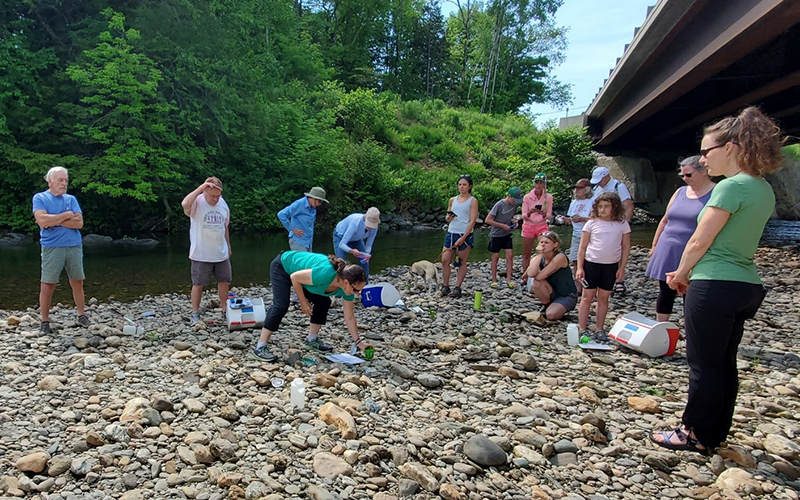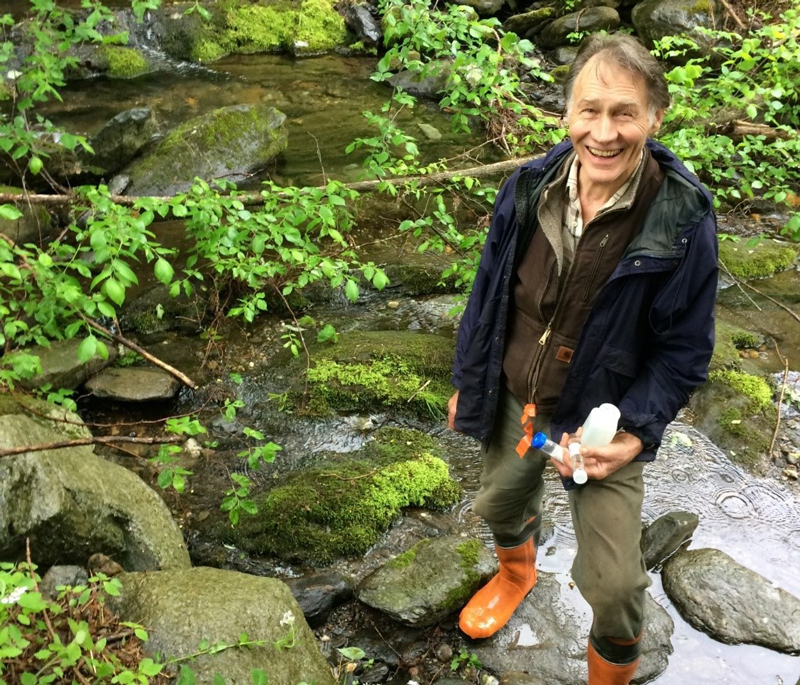Mad River Watch: Protecting The Valley's Waters & Community
Can a community truly understand and protect its vital resources through citizen science and dedicated observation? The Mad River Watch Program in Vermont proves that it can, offering a compelling model for environmental stewardship and community engagement for nearly four decades.
This article delves into the ongoing work of the Mad River Watch program, a project of Friends of the Mad River, offering a glimpse into the program's field work, lessons learned, and its commitment to safeguarding the health of the Mad River and its surrounding watershed. These articles, part of an ongoing series, explore the river's context within its wider ecosystem, mirroring the goals set forth by the Clean Water Act of 1972, which aimed to restore and maintain the chemical, physical, and biological integrity of the nation's waters. The Mad River Watch program aligns its objectives with these principles, guiding its inquiries and shaping its approach to understanding the river's health.
The Mad River Watch program, grounded in decades of water quality monitoring along the Mad River and its tributaries, actively connects community members to their watershed. This connection is fostered through the collection of high-quality data at key monitoring sites throughout the valley. The program's volunteers, armed with enthusiasm and a commitment to environmental observation, play a crucial role in this endeavor. The program is more than just data collection; it is a community effort, as highlighted by FMR director, Corrie Miller. The program embodies the ethos of collaborative environmentalism, a core principle of Friends of the Mad River's mission.
| Aspect | Details |
|---|---|
| Program Name | Mad River Watch |
| Organization | Friends of the Mad River (FMR) |
| Location | Mad River Valley, Vermont |
| Primary Focus | Water quality monitoring and environmental observations in the Mad River and its tributaries. |
| Goals | Understand and protect the health of the entire river system; restore and enhance the watershed's valued resources. |
| Key Activities |
|
| Community Involvement | Engages volunteers, partners with river scientists. |
| Partnerships | Builds partnerships with neighbors, businesses, towns, and other organizations. |
| Data Collection Methods | Uses digital handheld probes, test strips and collects samples for further testing. |
| Historical Context | Grounded in decades of monitoring since the early 1980s, with the core values based on the 1972 Clean Water Act. |
| Impacts | Reports and provides data on local environmental conditions, impacts of events, and long-term changes in the watershed. |
| Volunteer Activities | Visit field sites to collect data, make detailed environmental observations, and provide feedback. |
| Key Personnel | Corrie Miller, former FMR director; Shadis (unspecified role). |
| Reference Website | Friends of the Mad River Official Website |
The programs methodology includes rigorous data collection. Volunteers diligently measure parameters like pH using test strips, and water temperature using digital handheld probes. Their observations are not confined to routine metrics; they document the impact of events such as the devastating July 2023 floods, providing a comprehensive understanding of the river's resilience and vulnerability. Furthermore, the program adapts and evolves. The Mad River Watch program is assessing existing field sites for their suitability for monitoring benthic macroinvertebrates. This move reflects the programs commitment to exploring and incorporating new scientific approaches.
The Mad River Valley is not merely a geographic location; it's a community deeply intertwined with its natural environment. The local news, as reported by "The Valley Reporter," reflects this close relationship. Local news and community discussions revolve around the river's health, from incidents such as the active slide, which caused rocks and trees to fall, to initiatives that support community engagement. This dynamic connection is also illustrated by the community watch and support group for the Bridgeville to Mad River area, and also by the news posted on "Web bridgeville cert mc clellan to mad river watch & news public group."
The focus of the Mad River Watch goes beyond mere data collection. Its about understanding the intricate relationships within the watershed. The program's volunteers document changes in the river, such as the widening of the brook downstream from Duxbury, forming new islands as the water recedes. They record the surprising presence of birds and the tracks of deer using bridges as underpasses, all of which provide a glimpse into the river's vibrant ecosystem. The goal of these efforts is to provide a baseline for understanding the environmental impact that local topography, land use, and climate change have on the health of the river. The program offers a holistic and community-driven approach to environmental stewardship. The articles often highlight the collaborative spirit that drives the Mad River Watch, from sharing information to discussing issues. The sense of shared responsibility shines through the various reports.
The Mad River Watch actively involves the community in various ways. The program has partnered with river scientists, bringing more data to the community, highlighting the programs dedication to incorporating scientific insights into its efforts. With a dedicated team of volunteers, the program benefits from the wealth of knowledge and expertise that returning members bring, while also welcoming the fresh perspectives and enthusiasm of newcomers. The work is continuous, with teams collecting vital data and making environmental observations, such as during the field explorations conducted on June 26 and 27, and August 8th and 9th.
The community's interest extends beyond environmental concerns. Local businesses and individuals seek information, as evidenced by the request for a horse farrier in the Bridgeville and Mad River area. The availability of "Food, fun, and freebies" at CUNA's new farm stand, and the "Watering hole bar and meats" bone-in ribeye dinners, showcase the broader social fabric that weaves through the valley, making the river a central part of its life.
The Mad River Watch program represents a model for other communities nationwide, demonstrating the potential of grassroots initiatives. The program's success is a testament to the passion and dedication of its volunteers and the unwavering commitment of Friends of the Mad River. Their ongoing work continues to shape the future of the Mad River Valley, ensuring its health and vitality for generations to come.


